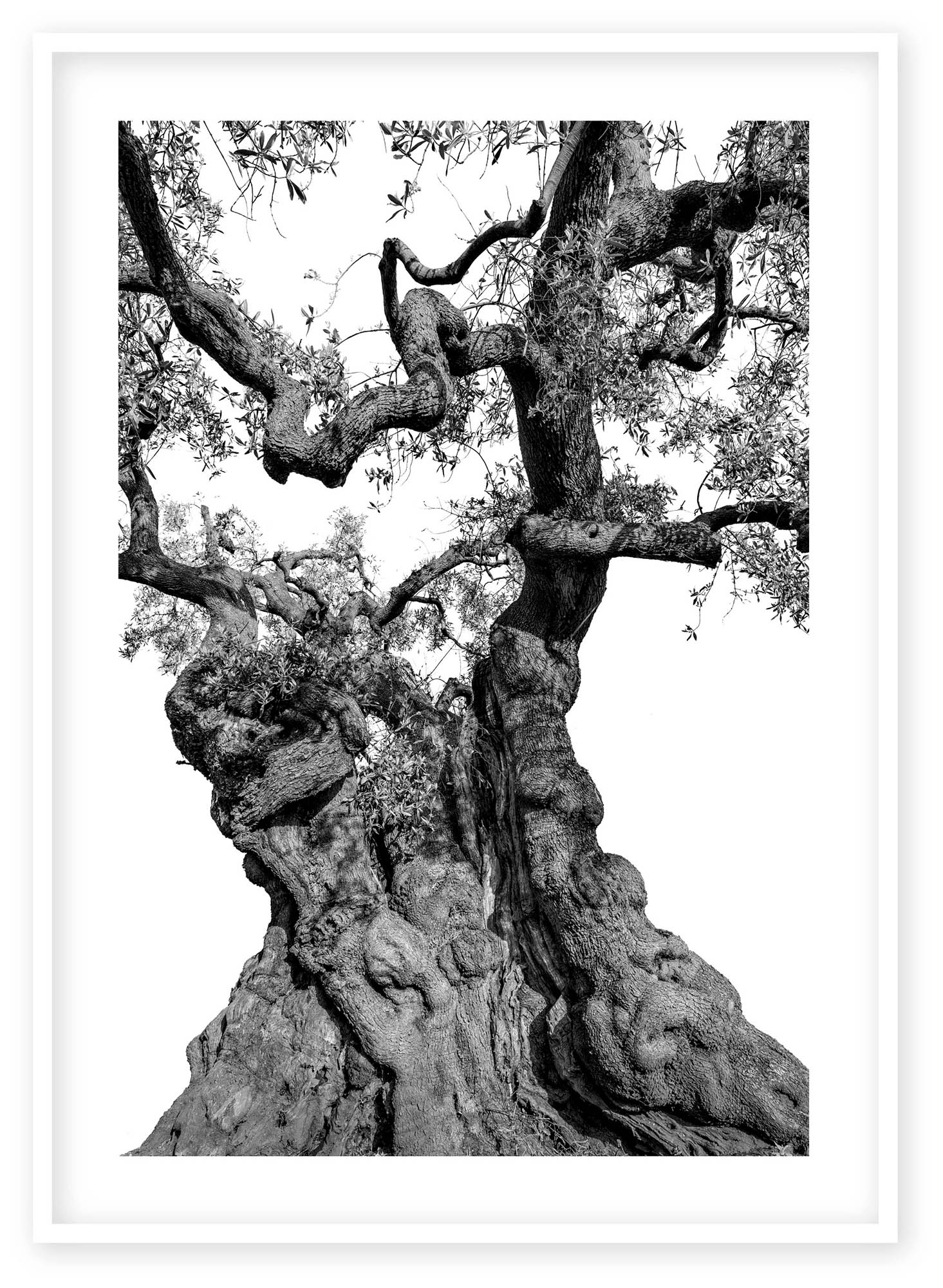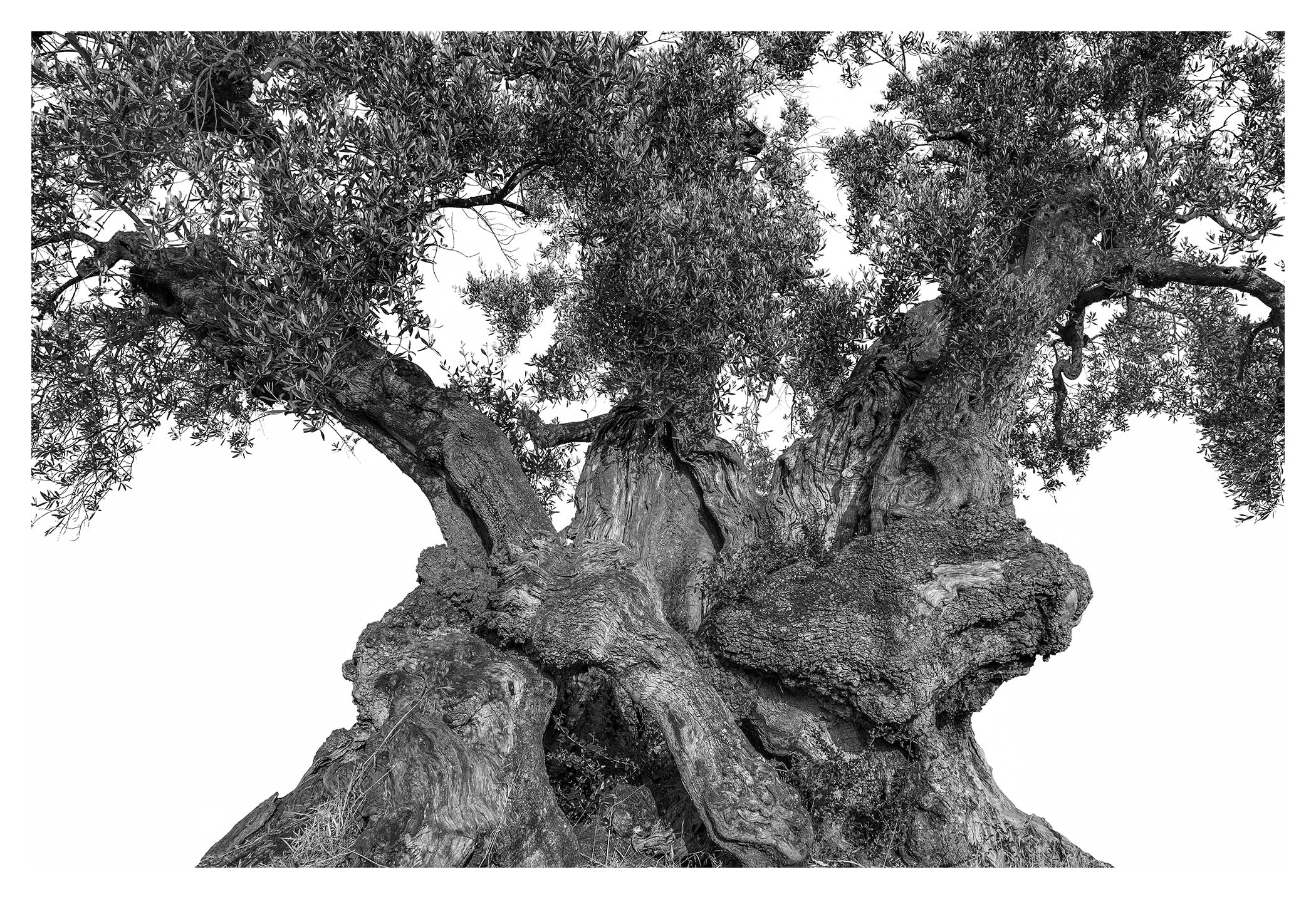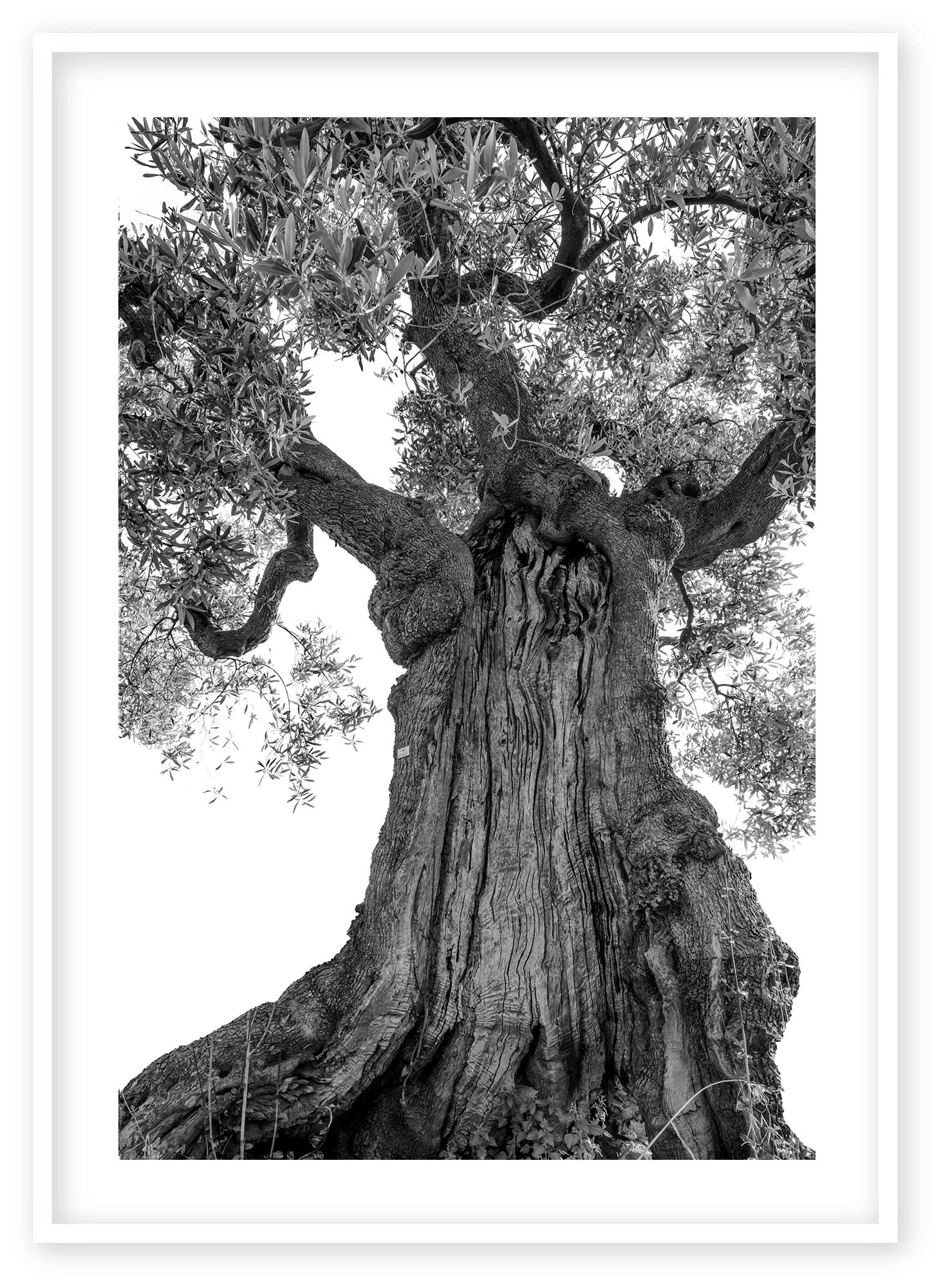Monumentali
Martin Ogolter travelled to Apulia in southern Italy where some fo the oldest olive trees in the world are at home. Some of these "Monumentali", as the locals call them, are a couple of thousand years old and through pruning, the cutting of branches, and the elements, each tree takes on a specific form. These sculptural trunks made by man and nature in tandem makes for spectacular ecological marvels. Ogolter photographed hundreds of these trees for the project and is gradually eraseing their environment to even more enhance their sculptural quality. As this process is highly labour intensive, there is only a certain amount of trees that can be finished a year.
The geographical location of these trees is not without significanceas they are situated at the far end of the Via Apia, latin for the queen of roads, which has had its fame since antiquity. The Romans shipped out to the eastern mediterranean from Brindisi, the city at the end of Via Apia, as did the knights heading for Palestine during the Crusades, some of these trees were around for all of this and through the oil of their fruit even fueled events.
The arrangement in grids and groups reminds us of the industrial photography of the Bechers and others of the early period of conceptual photography. But here we are not talking about industrial archeology as with the Bechers work but more of the individuality of these guardians of time while still being part of a group.









